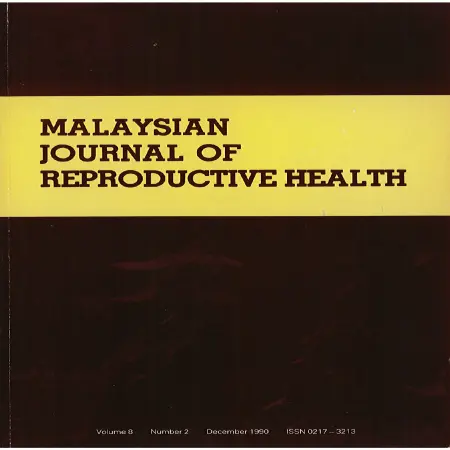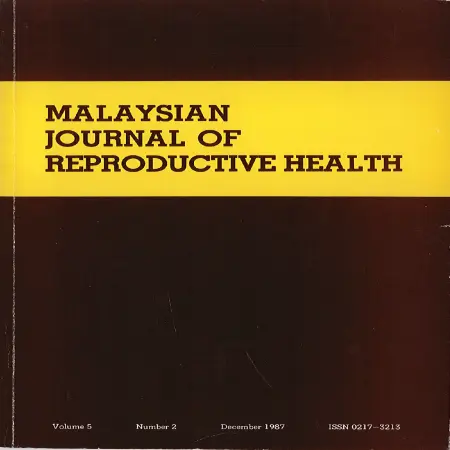TOPICS
|
|
The detection of estrogen-dependent proteins in monkey oviductal fluid
Item Type: Article
Editor:
Year: 00/12/1990
Abstract: To detect hormone induced changes in oviductal fluid protein pattern, flushings obtained from ovariectomized untreated and estradiol or estradiol plus progesterone treated monkeys were analysed by sodium dodecyl sulphate polyacrylamide gel electrophoresis. Superimposed densitometric scans of coomassie blue and periodic acid Schiff's (PAS) stained electrophoretic patterns revealed that estradiol treatment results in the appearance of a new protein (130 K) with maximum carbohydrate content as compared to other proteins present in the luminal milieu. The concentration of 85 and 95 K proteins also increase significantly after estradiol treatment. However, progesterone supplementation in estradiol primed monkeys results in the disappearance of 85 and 95 K proteins and decreased the 130 K glycoprotein considerably. Thus while estrogen acts as an inducer,progesterone antagonizes its action in monkey fallopian tubes and inhibits the synthesis of proteins which may have a role in early reproductive events.
|
|
|
|
|
|
A role for cholesterol synthesized de novo by human umbilical cord
Item Type: Article
Editor:
Year: 00/12/1990
Abstract: We have previously shown that the human umbilical cord in-vitro possess the ability to synthesize isocaproic acid and presumbly pregnenolone from cholesterol. Here, we examined the ability of the cord to synthesize cholesterol from acetate. Homogenates of umbilical cord (36-41 weeks gestation)obtained following spontaneous vaginal delivery from uncomplicated pregnancies (age 22-31 years) were incubated with [2-14C] acetate. Using the reverse-isotope dilution procedure, cholesterol was isolated and characterized as [14C] cholesterol acetate. Confirmation of identity of newly synthesized cholesterol was obtained after recrystallisation with added non-radioactive cholesterol acetate as standard. The rate of 14C incorporation is small but definite. The results indicate that the homogenates of human term umbilical cord contain the enzymes responsible for the conversion of [2-14C] acetate to [14C] cholesterol. It is suggested that cholesterol synthesized de novo can serve as a percursor for progesterone synthesis in-vivo.
|
|
|
|
|
|
Coagulation profile in women on low-dose oral contraceptive pills
Item Type: Article
Editor:
Year: 00/12/1990
Abstract: A cross-sectional study looking at the coagulation system was carried out involving 175 women attending the National Population and Family Development Board's Clinic at the Maternity Clinic, General Hospital, Kuala Lumpur. Study subjects comprise of 50 combined low-dose estrogen/progesterone oral contraceptive (OC) pill users and 75 non-OC users, acting as controls. The subjects were on the pill for a period of one year or more. There were significant shortening of the prothrombin time (PT) and partial thromboplastin time (PTT) in the OC group as compared to the control group. However, the activities of factors II, V and VII assayed were not significantly different between the two groups, suggesting that the changes in the PT and PTT were not significant clinically. The effect of long term usage of combined low-dose OC pills does not seem to indicate changes in the coagulation profile of the women in our study.
|
|
|
|
|
|
Comparative study on the acceptance and use of contraceptive methods in a rural population in Kelantan
Item Type: Article
Editor:
Year: 00/12/1990
Abstract: The generally poor health indices for Kelantan and the strong cultural beliefs with reference to contraception dictated the need for this study. 350 women from neighbouring estates were studied via questionaires. It was found that only 44.85% use some form of contraception and 18.4% of these resorted to traditional methods. There was some relationship between race and choice of contraception. Education did play a role in encouraging contraception. Despite the low acceptance of contraception, spacing of children did exist-probably due to breastfeeding that's widely practised.
|
|
|
|
|
|
Effects of friends feminine wipes on sperm viability in-vitro
Item Type: Article
Editor:
Year: 00/12/1990
Abstract: Friend feminine wipes, disinfectant impregnanted fibre tissues meant for the maintenance of female hygiene, was evaluated for its effect on sperm viability in-vitro and found to be spermicidal. These feminine wipes are therefore not recommended for use at coitus in couples who are planning pregnancies. Although the wipes were found to have spermicidal properties they are not recommended for the purpose of contraception.
|
|
|
|
|
|
Clinical evaluation of Buserelin, a GnRH analogue in the management of moderate to severe pelvic endometriosis
Item Type: Article
Editor:
Year: 00/12/1990
Abstract: A local study, a part of a multinasional and multicenter study on the efficacy and safety of Buserelin was carried out for the treatment of pelvic endometriosis using a standard protocol. 20 women diagnosed to have moderate to severe endometriosis by laparoscopy were recruited. The women were given 900 micrograms Buserelin acetate daily by intranasal spray for a fixed period of 6 months. Baseline hormonal and biochemical parameters were taken prior to treatment and the parameters were repeated during each follow-up at weekly and monthly intervals. In addition, changes in symptoms were monitored. A second look laparoscopy was performed at completion of therapy and patients were followed up for a further 6 months. There was 100 percent suppression of oestradiol levels during the 6 months treatment period. An improvement of implants according to AFS classification occured in all patients. One patient discontinued because of side effects. Restoration of cycles after completion of therapy occured within 7 weeks. There were 7 pregnancies (64%) in the first 6 months after treatment for those wanting pregnancies. During therapy, dysmenorrhoea, pelvic pain and dyspareunia improved considerably. Buserelin was proven to be effective in the management of pelvic endometriosis and is well tolerated and safe.
|
|
|
|
|
|
K.A.P. Study of Family planning among married Orang Asli Women of Hulu Langat District, Selangor Darul Ehsan, Malaysia
Item Type: Article
Editor:
Year: 00/00/1990
Abstract: A study of knowledge, attitude and practice was carried out among sixty nine married Orang Asli women in the district of Kuala Langat. The study showed that only a small proportion of the women were using family planning methods. About half of the study women were still uncertain with regards to their attitude towards family planning. The findings also showed that there was no diversity of the methods with oral contraceptive being the major choice. Majority of the husbands had indeed positive feeling towards family planning. The women also considered breastfeeding as a major method of contraception.
|
|
|
|
|
|
Hemorrheology and fibrinolytic response in women taking oral contraceptive pills
Item Type: Article
Editor:
Year: 00/12/1987
Abstract: A study was conducted on a total of 107 women attending the National Population and Family Development Board, Malaysia (NPFDB) Maternity Hospital, Kuala Lumpur. The subjects were divided into 3 groups. Group I and II consisted of woman on a low-dose combined estrogen and progestagen pills for a duration of 3-6 months and 1-2 year respectively. Group III was a control group consisting of women not on pills. A series of tests to evaluate hemorrheology and the fibrinolytic response were carried out. The results obtained showed no definite or significant difference in the two systems for all the three groups investigated. These findings are comparable to those reported by other investigators, implying relative safety of these pills in the local population.
|
|
|
|














